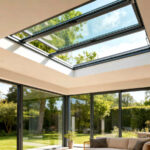
The Best Glass Options for a Durable Victorian Greenhouse
Want the perfect glass for your Victorian greenhouse? Discover the best Victorian greenhouse glass options, from classic float glass to ultra-strong tempered glass. Learn which type offers the right balance of durability, insulation, and traditional charm for your greenhouse. Whether you're restoring an antique structure or building new, this guide helps you choose long-lasting, beautiful glass that protects your plants. Find out which glass suits your climate and budget – get expert tips now!

The charm of a Victorian greenhouse is undeniable. Its elegant curves and classic silhouette can transform any garden. Choosing the right glazing is the most critical decision for preserving this beauty and ensuring longevity. The perfect glazing acts as a protective shell, influencing everything from plant health to your heating bills. We explore the best glass and polycarbonate options to help you create a durable and thriving Victorian greenhouse.
Understanding Greenhouse Glass Needs
A Victorian greenhouse is more than a garden feature. It is a controlled environment for nurturing plants. The glazing you select must manage light transmission, provide insulation, and withstand the elements. Different plants have unique requirements for light and temperature. Your local climate plays a significant role in this important choice. A well-chosen material creates a stable microclimate for your plants to flourish throughout the seasons.
Toughened Glass: The Resilient Choice
Toughened glass, often called tempered glass, undergoes a special thermal treatment. This process makes it significantly stronger than standard annealed glass. Its greatest advantage is its safety characteristic. When it breaks, it crumbles into small, granular pieces instead of sharp, dangerous shards. This feature makes it an excellent option for greenhouses in areas prone to severe weather or potential impact.
The main disadvantage of toughened glass is its cost. It is more expensive to produce than standard glass. Another consideration is that once it has been thermally treated, it cannot be cut or modified. Any alterations must be made before the toughening process. You must have precise measurements before ordering your panels. Its strength, however, makes it a superb long-term investment for a secure structure.
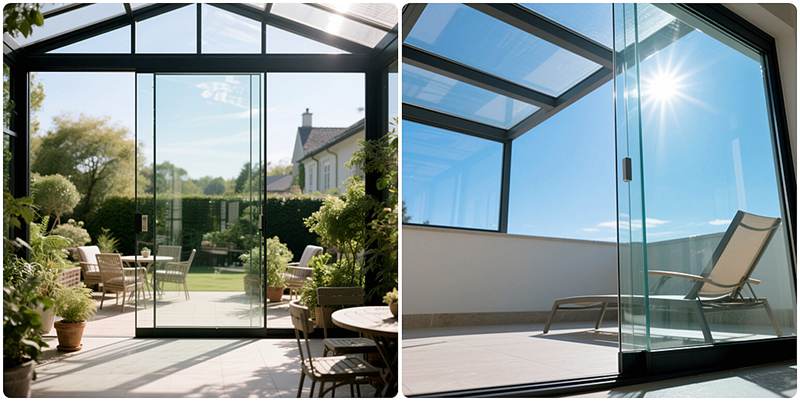
Single Glazing: Traditional and Simple
Single pane glass offers a classic, crystal-clear appearance. It allows for maximum light transmission, which is ideal for light-hungry plants. This was the original glazing used on historical Victorian designs. Its initial cost is typically the lowest among all glazing options. For hobbyists in milder climates, this can be a perfectly adequate and authentic solution.
The primary drawback of single glazing is its poor thermal performance. It provides minimal insulation, leading to rapid heat loss during cold nights. Conversely, temperatures can soar on sunny days. Your heating and cooling costs will likely be higher. Condensation is also a common issue, which can promote mold growth and damage delicate wooden frames over time.
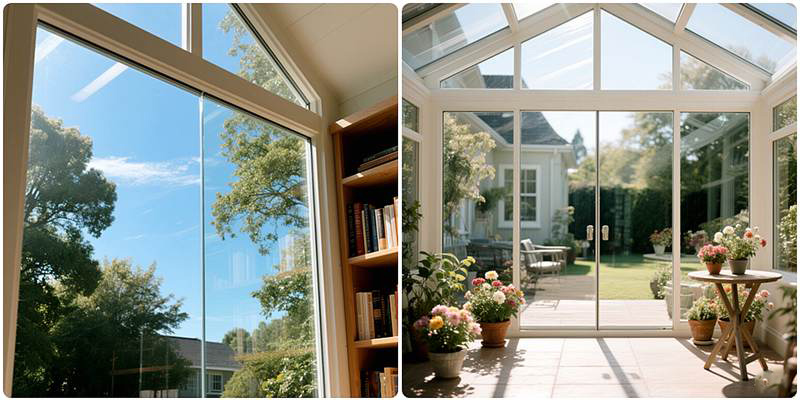
Double Glazing: The Insulation Expert
Double glazed units consist of two glass panes with a sealed space between them. This air gap acts as a powerful insulator, dramatically reducing heat transfer. This thermal efficiency is its most celebrated benefit. It maintains a more consistent temperature, protecting plants from frost and reducing energy expenses. Condensation is also greatly minimized.
The downside of double glazing is its increased weight and higher initial cost. The additional weight must be supported by a strong frame, which may require structural reinforcement in some greenhouse designs. The air gap, while great for insulation, can slightly reduce light transmission. For most plants, this minor reduction is not a problem, but it is a factor worth noting for specialists growing high-light species.
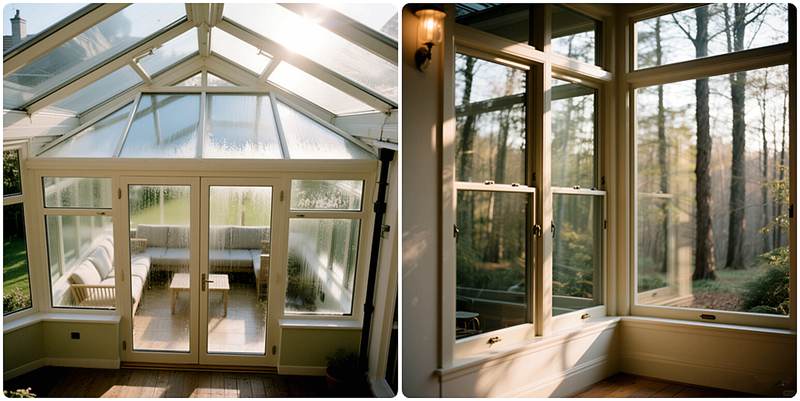
Laminated Glass: Security and Safety Combined
Laminated glass is created by bonding two or more glass sheets with a durable interlayer. This plastic layer, usually made of PVB, holds the glass together if it breaks. Instead of shattering, the glass cracks in a spider-web pattern but remains largely in place. This characteristic provides enhanced security and safety, which is valuable in public gardens or areas with high windborne debris risk.
The interlayer in laminated glass can filter out almost all ultraviolet light. This protects sensitive plants from UV damage. On the negative side, laminated glass is heavier and more expensive than toughened glass. It also offers less insulation than a dedicated double-glazed unit. Its use is often specialized, focusing on safety and impact resistance over thermal performance.
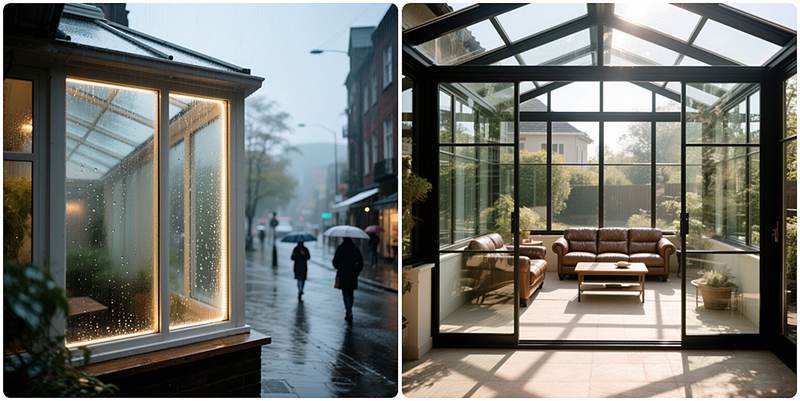
Polycarbonate Panels: The Modern Challenger
Polycarbonate is a robust and shatterproof plastic material. It is incredibly impact-resistant, far surpassing even toughened glass. This makes it an outstanding choice for locations experiencing hail or storms. Multi-wall polycarbonate panels, with their twin or triple-wall construction, provide exceptional insulation. Their thermal performance often exceeds that of double-glazed glass.
The main compromise with polycarbonate is its appearance. It does not have the same perfectly clear, traditional look as glass. Over time, some grades can yellow from UV exposure, though UV-protected coatings have largely solved this issue. The surface is also softer than glass and can be scratched more easily. Despite this, its durability and insulation make it a very practical modern alternative.
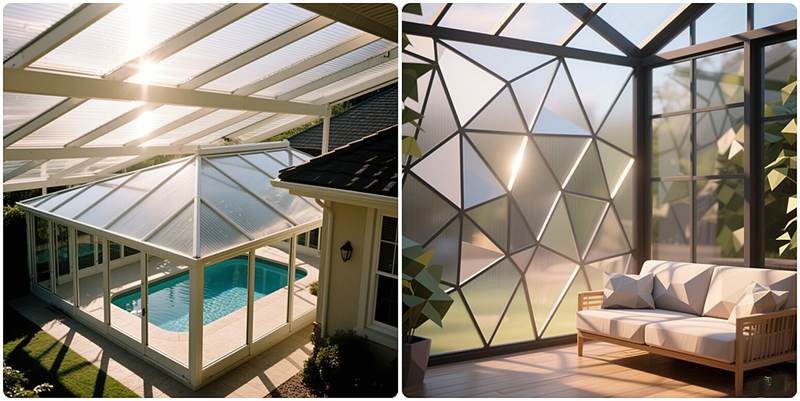
Making Your Final Glazing Decision
Selecting the best greenhouse glass or polycarbonate depends on your specific priorities. Consider your local weather patterns, your budget, and the types of plants you wish to grow. For a perfect blend of classic aesthetics and modern performance, many owners choose a combination. Toughened glass might be used for the walls, while a double-glazed option is selected for the roof.
Your Victorian greenhouse is a long-term investment. Choosing the right glazing material will ensure it remains a beautiful and productive sanctuary for many years. A durable structure begins with informed choices about its protective skin. We hope this guide helps you build the greenhouse of your dreams, a perfect marriage of historic elegance and contemporary resilience.
Why Choose Us?
- As the first manufacturer in China to introduce the Victorian conservatory design from Europe, we have 36 years of production experience since 1988, and our products are distributed in 68 countries.
- We have a professional team of 8 conservatory design engineers and 60 production workers. We are equipped with 2 hot-dip galvanizing machines, 2 steel shot blasting machines, and 1 spray line.
- Our professional design team can provide theoretical calculation data support for wind pressure resistance, earthquake resistance, and snow resistance of large-scale steel structure conservatories.
- Strict quality control. 8 inspection stages: raw material inspection, cutting and blanking size inspection, welding quality inspection, hot-dip galvanizing quality inspection, spray quality inspection, assembly quality inspection, and packaging quality inspection. Ensuring smooth assembly of the products, no rust, no leakage, and compliance with customer national standards.
- We cooperate with many well-known architectural design companies worldwide.
- Customized services. We can customize according to customer designs and dimensions. We also provide supporting facilities such as electric sunshades and air conditioners.
- We offer installation dispatch services, inspection services, and free replacement of parts. We also present high-value exquisite gifts.
- Video factory tour. You can view the entire production process.
Ready to Bring Your Greenhouse to Life?
Share your ideas and we'll create a custom solution just for you. Your email address will not be published. Required fields are marked *


